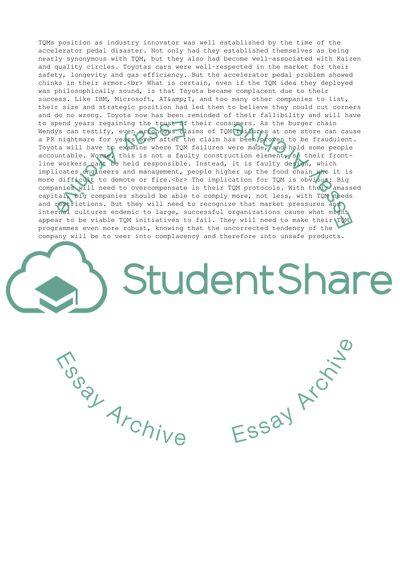Cite this document
(TQM Issues of Toyota Company Term Paper Example | Topics and Well Written Essays - 3000 words - 1, n.d.)
TQM Issues of Toyota Company Term Paper Example | Topics and Well Written Essays - 3000 words - 1. Retrieved from https://studentshare.org/management/1748060-tqm
TQM Issues of Toyota Company Term Paper Example | Topics and Well Written Essays - 3000 words - 1. Retrieved from https://studentshare.org/management/1748060-tqm
(TQM Issues of Toyota Company Term Paper Example | Topics and Well Written Essays - 3000 Words - 1)
TQM Issues of Toyota Company Term Paper Example | Topics and Well Written Essays - 3000 Words - 1. https://studentshare.org/management/1748060-tqm.
TQM Issues of Toyota Company Term Paper Example | Topics and Well Written Essays - 3000 Words - 1. https://studentshare.org/management/1748060-tqm.
“TQM Issues of Toyota Company Term Paper Example | Topics and Well Written Essays - 3000 Words - 1”, n.d. https://studentshare.org/management/1748060-tqm.


